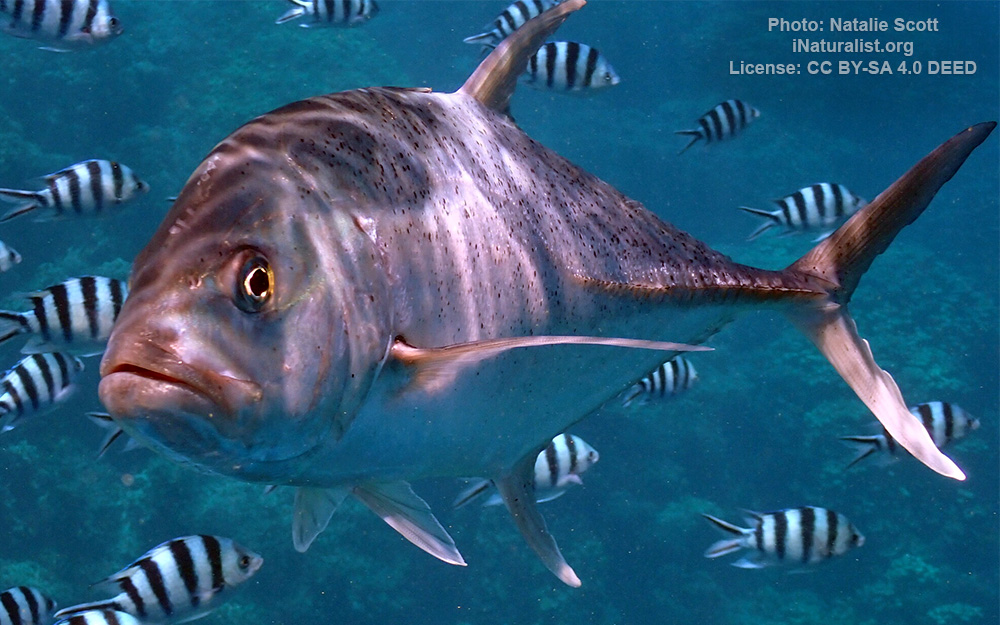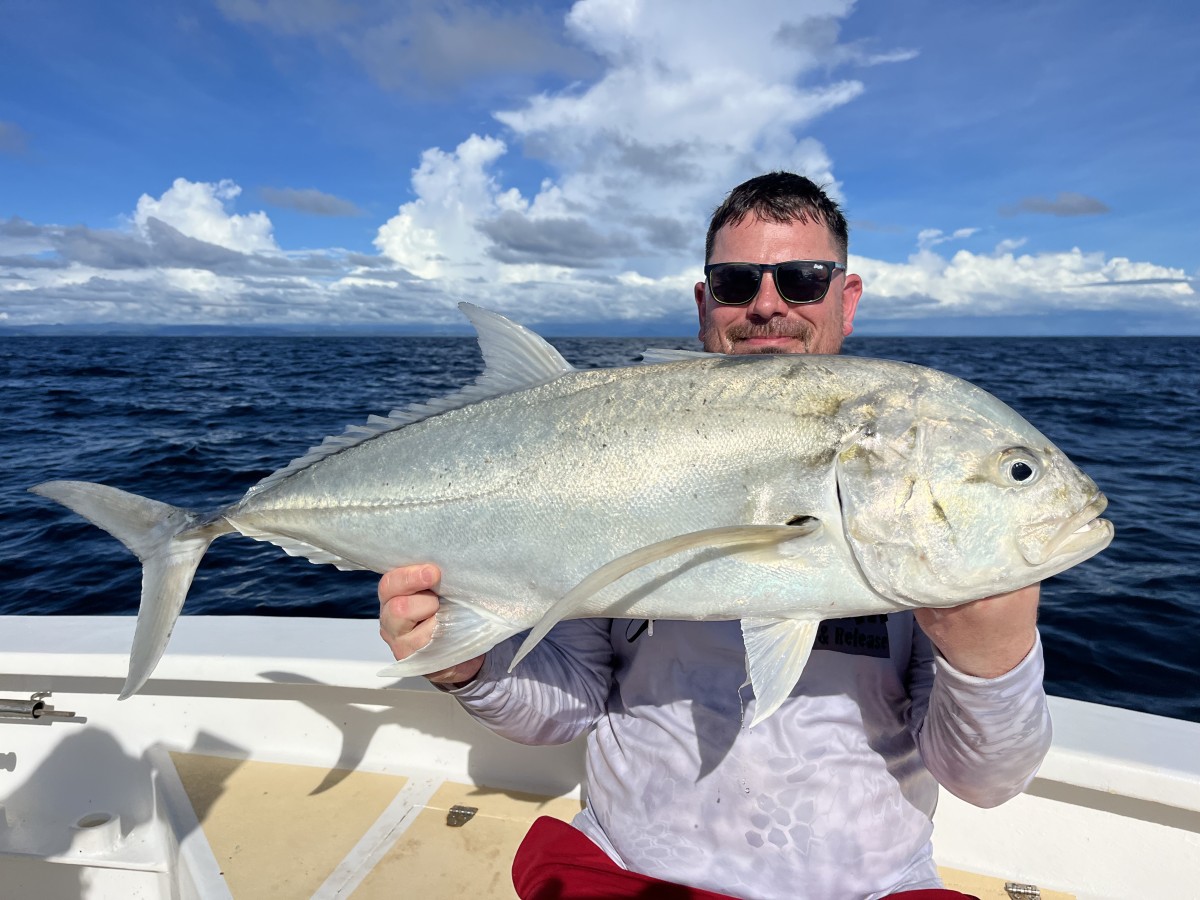Brassy trevally
(Caranx papuensis)

Image source: Natalie Scott | inaturalist.org
Classification
General data
The brassy trevally is a large species of fish, growing to a known maximum of 88 cm in length and 6.4 kg in weight. As its name suggests, the brassy trevally is a brassy to yellow greenish colour dorsally, becoming silvery white on the underside. Juveniles generally lack the brassy tinge, being silver all over.
The species head and body above the lateral line is scattered with small black spots, with few spots occasionally much lower near the pectoral fins. These spots become more numerous with age.
The species also has a conspicuous pale silvery-white spot with black margins shoulder near the upper opercle.
The fins are yellow to dusky with the exception of the caudal fin, which has a dusky upper lobe and a dusky to yellow lower lobe and distinctive narrow white band on the trailing edge.
It is often confused with the giant trevally, Caranx ignobilis, but is best distinguished by its lighter dorsal colouring and abundant black spots.
The dusky upper caudal fin lobe is a distinctive feature.
It is similar in general appearance to most jacks in the genus, having a compressed, oblong body, with the dorsal profile more convex than the ventral profile, particularly anteriorly. The dorsal fin is in two distinct parts; the first consisting of eight spines and the second of one spine and 21 to 23 soft rays. The anal fin consists of two anteriorly detached spines followed by one spine and 16 to 19 soft rays, while the pelvic fins have one spine followed by 19 to 20 soft rays. The lateral line is moderately arched anteriorly, with 53 to 61 scales in this section, while the straight section contains none to three scales and 31 to 39 strong scutes. The breast is naked ventrally with the exception of a small patch of scales before the pelvic fin.[8] The species has weakly developed adipose eyelids, while its dentition consists of an outer row of widely spaced canines and an inner band of villiform teeth in the upper jaw with a row of widely spaced conical teeth on the lower jaw. The brassy trevally has 26 to 30 gill rakes and 24 vertebrae.
The brassy trevally is widespread throughout the tropical and subtropical waters of the Indian and West Pacific Oceans. Its range extends from South Africa and Madagascar north along the East African coast, but no records of the species are known from the Red Sea or Persian Gulf. Records resume from India eastward throughout Southeast Asia, the Indonesian Archipelago and numerous Indian Ocean and East Pacific island groups. The species is known from as far south as Sydney, Australia and as far north as the Ryukyu Islands of Japan. Its range extends eastward to the Marquesas Islands in the central Pacific.












